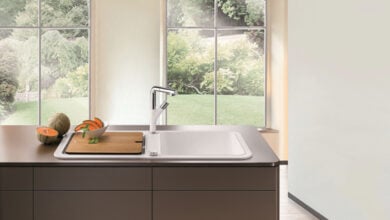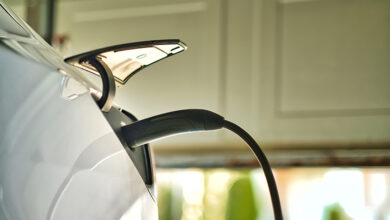Smoke alarms: answering your FAQs
Smoke alarms are an essential safety feature for all homes. Should a fire start in your house, your smoke alarms will give you and your loved ones the necessary time to evacuate safely. It’s important that you pick the right model for you, and that you get your smoke alarms installed properly. Below, we’ve answered some of the frequently asked questions about smoke alarms, so you can be fully informed about this important safety feature.
To get your smoke detectors installed, speak to a specialist smoke alarm installer today.
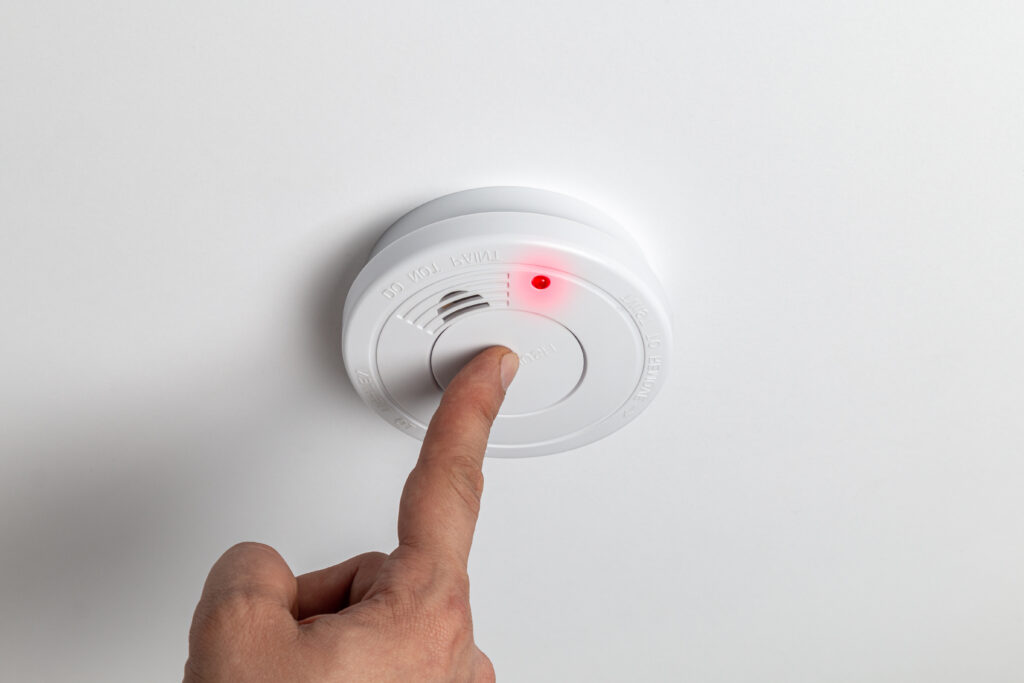
Which smoke alarm is best?
There are several different types of smoke alarms for you to choose from, depending on your preferences. We recommend you do some research on the right model for you before you purchase one, so that you can make a fully-informed decision on what your home needs. The most common types of smoke alarms in the UK are:
- Ionisation smoke alarms are generally the cheapest models and are the best at detecting fires with a lot of flames, such as those caused by flammable liquids, wood and paper. Ionised smoke alarms contain a small radioactive substance that ionizes the air inside the alarm, causing any smoke that enters the chamber to disrupt the ionisation process, triggering the alarm.
- Optical smoke alarms, or photoelectric smoke detectors are great at detecting slow burning fires, and are often more expensive than ionisation alarms. Smoke entering this type of alarm scatters light inside the alarm’s chamber, causing the alarm to go off. These are more commonly found in commercial buildings.
- Dual-sensor smoke alarms combine the technology of the above two alarms, making them more effective at detecting a range of fires. They’re a popular choice for many homeowners.
- Heat alarms detect a rise in temperature caused by a fire, and are usually found in kitchens and garages. They’re not triggered by smoke.
- Combined smoke and carbon monoxide alarms detect both smoke and carbon monoxide. Other smoke alarms have additional detectors for heat and other gases too, so keep this in mind when you make your choice.
Many smart smoke alarms now come with app features and other smart home technology. Not sure where to start on picking the right fire alarm system for you? Some of the top-rated smoke alarms in the UK currently on the market include:
- The Kidde 10LLDCO
- The FireAngel ST-622T
- The Aico Ei650
Once you’ve chosen your model and type, a smoke alarm specialist can install your smoke alarms for you. Request a quote today to get started.
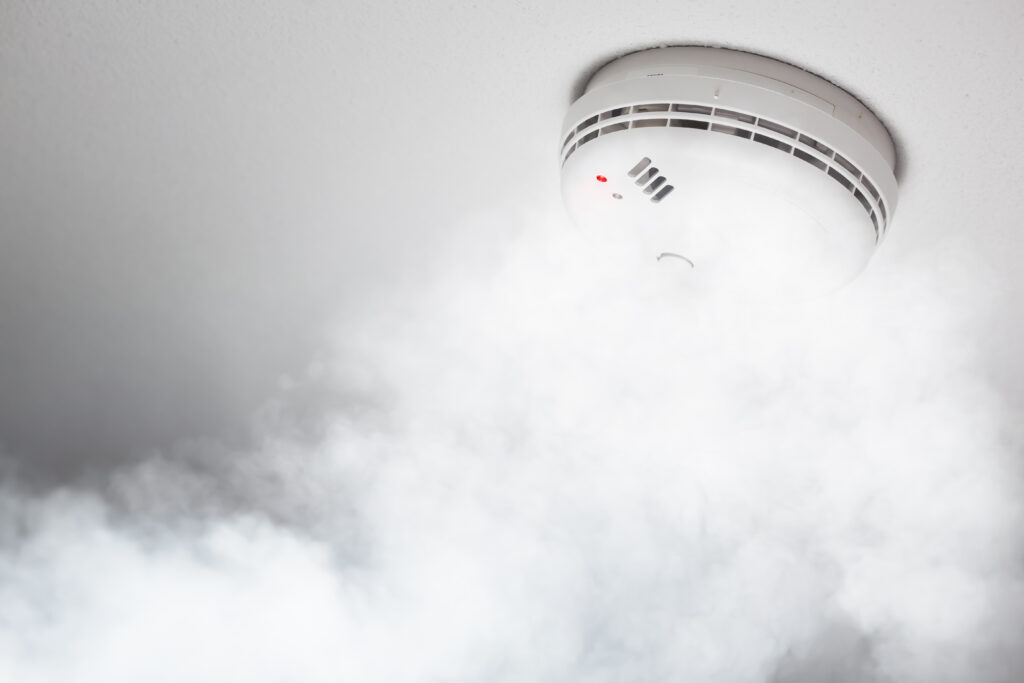
What do the red and green lights mean on a smoke detector?
In general, the green light indicates that the alarm is powered and working fine. It should always be on. The reason the red light on your smoke alarm comes on will depend on your specific model. It could mean:
- The alarm has detected smoke
- The alarm is running low on battery (for peace of mind, you should opt for year batteries)
- The alarm has malfunctioned
To find out which of these your model is indicating, you should read the manual for your alarm, or contact the manufacturer. Alternatively, a qualified technician should be able to resolve the problem for you.
Who is eligible for free smoke alarms in the UK?
Whether or not you’re eligible for a free smoke or fire alarm depends on which area of the UK you live in, as free smoke alarms are usually provided by fire departments or local authorities.
These groups are generally eligible for free smoke alarms:
- Those with disabilities or long-term illnesses
- Those over the age of 65
- Families with young children
- Low income homes, and those receiving benefits
Contact your local authority or fire department to find out if you’re eligible for a free smoke alarm.
Where should I put my smoke detectors?
It’s important that your smoke alarms are placed in specific areas of your home. There should be one on every floor (usually in your hallways), and in any lofts and basements. To give you a vital early warning, you also need to have one in every room where a fire could start, including your kitchen, all your bedrooms and your living room (as well as anywhere else you light candles).
You need to be able to hear smoke alarms from sleeping areas. They should also be installed at least 30cm away from light fittings and walls.
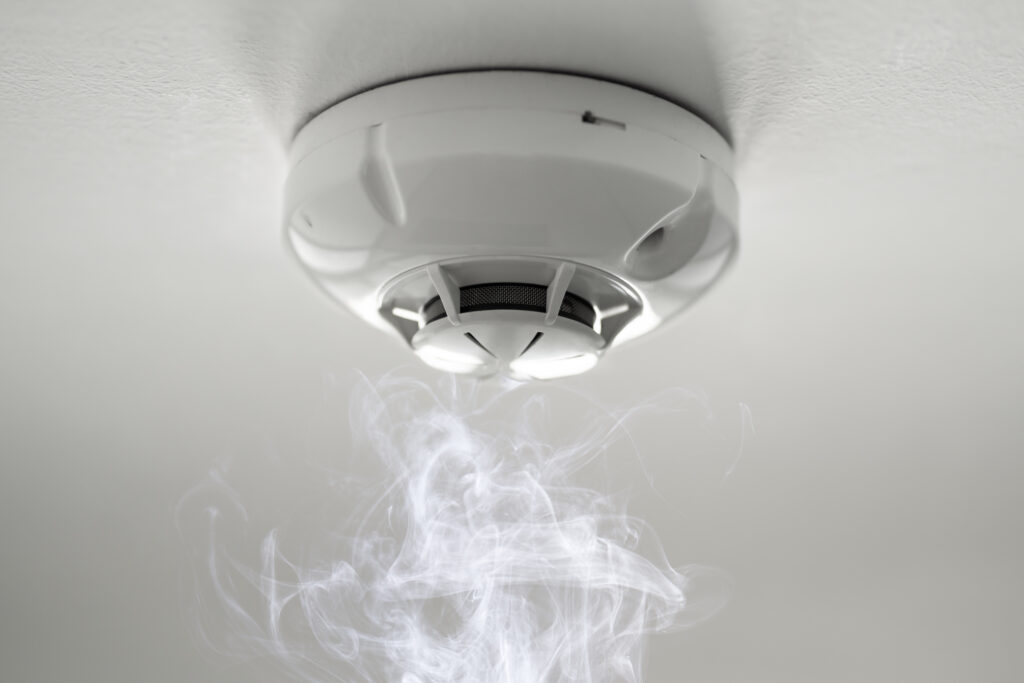
Can I replace smoke detectors myself?
You absolutely can replace your smoke alarms yourself, as long as you follow the manufacturer’s instructions carefully. Keep in mind that many smoke detectors are mains powered. To replace a smoke detector, you should:
- Turn off power to the alarm (you might have to turn off the breaker that controls the smoke detector, or remove the detector’s replaceable batteries)
- Remove the detector from the wall or ceiling (you might have to twist or unscrew it)
- Disconnect the wires from your old smoke alarm. You might have to unscrew wire nuts or pull the wires out of the detector.
- Follow manufacturer’s instructions to install your new detector. You might have to connect wires to the new detector or attach the detector to a mounting bracket
- Turn the power back on
- Test the new smoke detector to check it’s working properly
If your smoke or heat alarms are wired to your home’s electrical system, then you will need a qualified electrician to install new ones’ for you.
Alternatively, you can hire a smoke alarm system specialist to install new smoke alarms for you. Simply request a quote today to get started.
What can trigger a smoke detector into creating a false alarm?
Smoke alarms detect the presence of smoke and other airborne particles that might indicate a fire. Due to this, there are a range of things that can trigger a smoke alarm into creating a false alarm. These include:
- Steam, such as steam from a bathroom after a shower or a bath
- Cooking fumes, especially if your kitchen is poorly ventilated, or if you burn your food
- Dust, especially if you don’t regularly clean your detector
- Humidity, areas with a lot of moisture or damp
- Cigarette smoke, especially if the room is poorly ventilated or small
The same isn’t the case for heat alarms. If your smoke alarm is constantly getting triggered incorrectly, you might want to consider replacing it, or moving it to a different location.

Fire safety is incredibly important. Make sure you regularly clean and test your smoke detectors, so that you can rest easy knowing they’re working properly and ready to alert you to any dangers. If you don’t want to replace or install your alarms yourself, then a specialist can do it for you. Request a quote today to get started.
